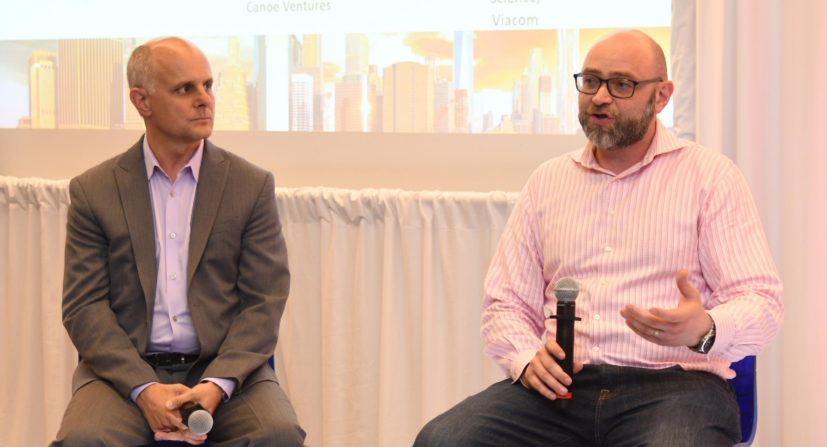Exclusives

Experts Talk Benefits — and Drawbacks — of Advanced Ads
Story Highlights
Dynamic ad insertion and addressable advertising have long been touted as the future of non-linear, ad-supported media, but despite advances in technology making advanced advertising a reality, there’s a reason it’s been a “slow burn,” according to experts in the field.
“We hear the term addressable advertising, and we hear the term dynamic ad insertion. We hear about it in the digital world, online, mobile, OTT,” said Harold Geller, executive director of Ad-ID, speaking July 24 at the Smart Content Summit East event, part of the Media & Entertainment (M&E) Day at the Microsoft Conference Center in New York. “But we’re in a world now where everything has become addressable.”
He pointed to the new ATSC 3.0 standard, which allows for IP content delivery via broadcast, opening up things like addressable advertising for over-the-air content.
Julian Zilberbrand, EVP of audience science for Viacom, noted that his company is heavy into the addressable advertising business, both on the buy and sell side. And there’s plenty of room to grow in the business, he added.
“Addressable is valuable, because it’s possible to have a one-on-one dialogue with an individual,” Zilberbrand said. “But addressable everywhere is difficult, because there just isn’t enough available data in the world to break it out, to have a real, valuable conversation with every single marketer. And not every marketer needs a one-on-one conversation for every initiative they’re doing.
“There has to be some variance, because not everything is direct response.”
Branding still holds an important place in the advertising world, and addressability doesn’t necessarily always focus on branding, Zilberbrand added. “However, in a world where you can be addressable, and assuming you have the know-how and infrastructure and the data to attack it in an intelligent manner. The opportunity to have the right conversation at the right time with the right individual, is the [goal] for everyone from a marketing perspective.”
But addressability is a more expensive proposition for reaching the consumer, and there’s a reason why it’s been a “slow burn: in the industry in terms of the growth of addressable advertising, he stressed.
Chris Pizzurro, head of sales and marketing for advertising tech company Canoe Ventures — which does dynamic ad insertion for cable VOD — also added that addressable requires a further investment in the creative side of advertising, “and creative is still expensive,” he said.
But addressable advertising and dynamic ad insertion are the future of targeted ads, everyone agreed. For Canoe, the company recently supported a pilot show for a cable operator and tested whether a national advertiser could do addressable, and whether or not it would work. “And the answer is yes, so that’s good,” Pizzurro said. “Now we’re in the process of ‘How do you scale that across your MSO’s full footprint,’ and offer it to all our programmers”
The 2018 M&E Day also included Content Protection Summit East and Entertainment Production in the Cloud conference tracks, providing M&E technology teams valuable insights into the creation, production, distribution, security and analysis of content.
The 2018 Media & Entertainment Day was presented by Microsoft, with sponsorship from IBM Watson Media, Amazon Web Services, IBM, LiveTiles, Microsoft Azure, NAGRA, NeuLion, Ooyala, EIDR, GrayMeta, MarkLogic, Qumulo, Avid, Cloudian, SoftServe and TiVo. The event was produced by MESA, the Content Delivery & Security Association (CDSA), the Hollywood IT Society (HITS) and the Smart Content Council.
Click here for audio of the presentation.









